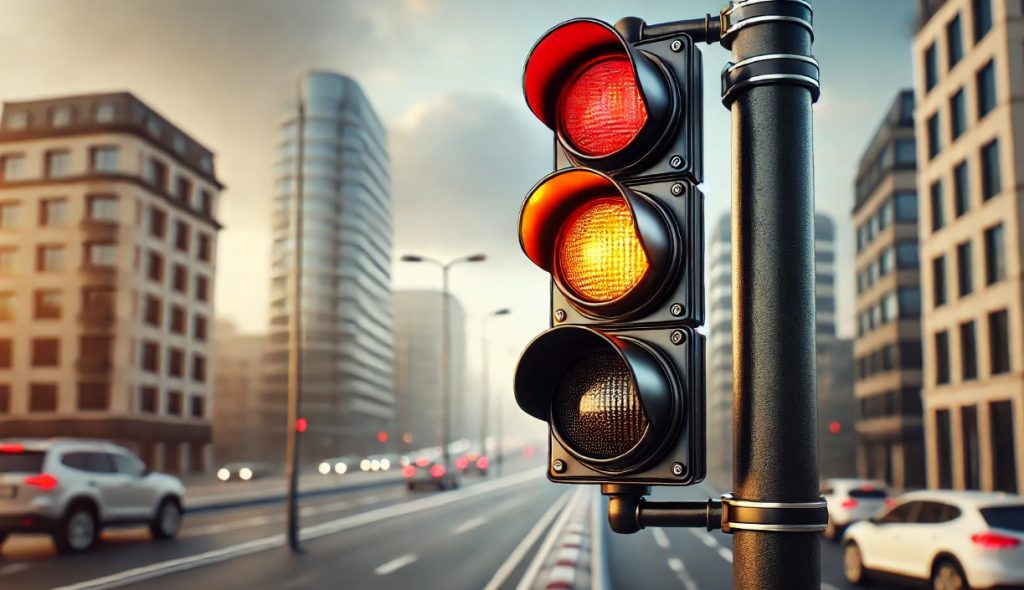Table of Contents
Traffic lights play a vital role in managing road safety and ensuring smooth traffic flow. In the UK, different traffic light sequences guide drivers on when to stop, prepare, and proceed.
One of the most misunderstood phases is when the red and amber lights are displayed together.
Many drivers are unsure whether they should start moving or remain stationary. Misjudging this signal can lead to penalties, accidents, or even road congestion.
Understanding what should you do when you’re approaching traffic lights that have red and amber showing together is crucial for road safety and legal compliance.
In this blog, we will explain the correct response, common mistakes, and essential tips for handling this situation properly.
What Do Red and Amber Traffic Lights Mean in the UK?
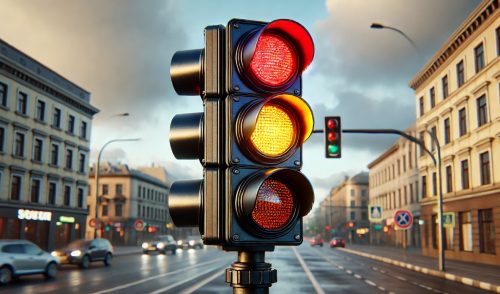
In the UK, traffic lights follow a structured sequence to control vehicle movement and ensure road safety.
When red and amber lights appear together, it signals that the lights will soon change to green. However, this does not mean you should start moving immediately.
According to the UK Highway Code, red and amber lights together instruct drivers to prepare to move but remain stationary until the green light appears. This ensures all vehicles at the junction have fully stopped before movement begins.
Premature acceleration at this stage can be dangerous and illegal. Drivers should engage the proper gear, check their surroundings, and only proceed when the light turns green.
Misunderstanding this phase can lead to penalties, accidents, and collisions, especially at busy intersections and pedestrian crossings.
Understanding the correct traffic light sequence is key to ensuring safe driving and preventing mishaps.
What Should You Do When You’re Approaching Traffic Lights That Have Red and Amber Showing Together?
When you see red and amber lights together, follow these steps to ensure safety and legal compliance:
- Do not move until the green light appears. Even though red and amber together signal an upcoming green, you must remain stationary.
- Prepare your vehicle for movement. If driving a manual car, engage the clutch and select first gear. If driving an automatic, keep your foot on the brake.
- Check your surroundings. Look for pedestrians, cyclists, or vehicles that may still be moving.
- Maintain focus. Avoid distractions, as the light will turn green soon.
- Accelerate smoothly. When the green light appears, gradually increase speed and proceed if it is safe to do so.
By following these steps, you can ensure safe driving while complying with UK traffic laws.
Why Should You Stop at Red and Amber Traffic Lights Instead of Moving?
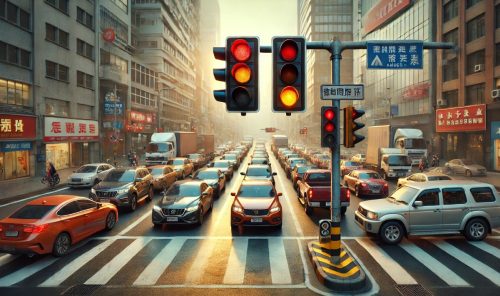
Some drivers wrongly assume that red and amber together mean they can start moving. However, this is incorrect and illegal.
The UK Highway Code clearly states that you must wait until the light turns green before proceeding. Failing to stop at this phase can lead to:
Accidents and Collisions
Other road users may still be moving when the red and amber lights are showing, increasing the risk of crashes. Prematurely moving can lead to dangerous situations, especially at busy intersections.
Legal Consequences
Moving before the green light can result in fines or penalty points on your driving record. This behaviour is considered illegal and can negatively impact your driving history.
Traffic Congestion
If multiple drivers move too early, it can cause confusion and disrupt the flow of traffic. This can lead to delays and longer wait times for everyone on the road.
The red and amber phase is designed to give drivers time to prepare their vehicle and ensure a smooth transition to movement.
By waiting until the green light appears, you contribute to safer roads for all users.
How Does the Traffic Light Sequence Work in the UK?
The UK follows a structured traffic light sequence to regulate the movement of vehicles and pedestrians, ensuring smooth and safe road usage.
Each phase of the sequence serves a specific purpose, guiding drivers on when to stop, prepare, and proceed. The UK traffic light phases are:
Red Light – Stop
When the red light is on, all vehicles must come to a complete stop. No movement is allowed under any circumstances.
Red and Amber Light – Get Ready
This phrase means you should prepare to move but must remain stationary until the green light appears.
Green Light – Go, If Safe
When the green light is displayed, you can proceed, provided the road is clear. Always check for pedestrians and other vehicles.
Amber Light – Stop, Unless Unsafe
The amber light signals an upcoming red light. Drivers should stop unless they are too close to the signal and stopping abruptly could cause danger.
Following this sequence correctly prevents accidents and keeps traffic flowing efficiently.
Can You Be Fined for Moving on Red and Amber Traffic Lights?
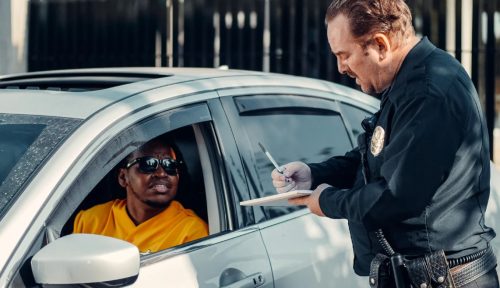
Yes, moving before the green light appears is considered a traffic violation under UK road laws. The red and amber phase does not mean you can proceed, it is only an indication to prepare for movement.
Ignoring this rule can result in penalties, fines, and other consequences. Potential Penalties for Moving Too Soon:
Fines
Drivers may face a fine of up to £1000 for traffic offences, depending on the severity. The amount can vary based on the specific violation and its impact on road safety.
Penalty Points
A driver may receive three penalty points on their licence for certain offences. Accumulating too many points can lead to disqualification from driving.
Increased Insurance Costs
Traffic violations can be considered a risk factor by insurance companies. As a result, drivers may experience higher premiums due to their driving history.
Moving too early not only results in legal consequences but also increases the risk of accidents, as other vehicles and pedestrians may still be in motion.
How Can You Safely React to Traffic Lights Changing to Green?
When transitioning from red and amber to green, it is crucial to react safely and responsibly to ensure smooth traffic flow and avoid potential hazards.
A common mistake among drivers is moving too quickly, which can lead to sudden stops, collisions, or failure to notice pedestrians.
Steps for a Safe and Smooth Reaction
- Remain Stationary Until the Green Light Appears: Even though red and amber indicate that the light will soon change, you must wait before moving.
- Check Your Mirrors: Look for other road users, including pedestrians, cyclists, and motorcyclists, who may still be in motion.
- Ensure the Road Ahead is Clear: Make sure no obstructions or slow-moving vehicles are present before accelerating.
- Gradually Accelerate: Avoid sudden movements to maintain control over your vehicle and prevent accidents.
By following these steps, drivers can reduce the risk of unexpected collisions and ensure safer driving at junctions and intersections.
What Mistakes Do Drivers Commonly Make at Red and Amber Lights?
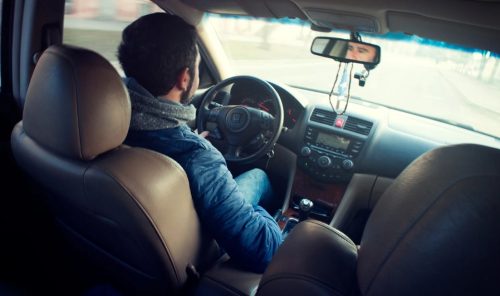
Many drivers make avoidable errors when dealing with red and amber traffic lights. These mistakes often lead to traffic disruptions, potential accidents, or fines. Recognising these errors can help improve driving habits and road safety.
Common Mistakes at Red and Amber Lights
- Moving Too Soon: Some drivers start moving before the light turns green, which is both illegal and dangerous.
- Failing to Prepare for Movement: Not selecting the correct gear in time can cause delays, especially at busy junctions.
- Ignoring Surroundings: Pedestrians, cyclists, or motorcyclists might still be crossing or passing near the vehicle.
- Not Maintaining a Safe Distance: If a driver accelerates too soon and the car in front hasn’t moved, it can lead to rear-end collisions.
Avoiding these mistakes ensures better road discipline, prevents accidents, and reduces the risk of receiving penalties.
What Are the Best Tips for Handling Traffic Lights Safely?
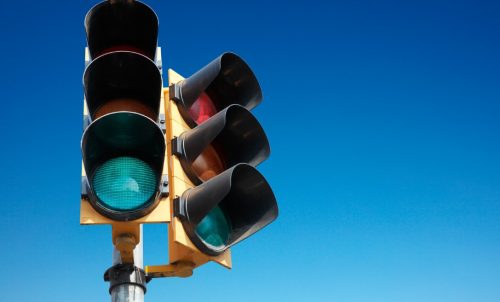
Understanding and correctly responding to traffic signals is essential for safe and responsible driving.
Following some basic guidelines can help reduce risks, improve reaction time, and ensure compliance with the UK Highway Code. Essential Tips for Handling Traffic Lights:
Always Follow the Correct Sequence
- Understand and follow the UK traffic light system to avoid confusion. Failing to do so can result in penalties and accidents.
Stay Alert and Avoid Distractions
- Always pay attention to changing lights, pedestrians, and other vehicles. Avoid using mobile phones or doing activities that can distract you from the road.
Check for Other Road Users
- Even when the light turns green, cyclists and pedestrians may still be crossing. Always double-check your surroundings before proceeding.
Accelerate Smoothly
- Avoid sudden accelerations that can cause loss of control or accidents. Gradually increase speed to maintain control of your vehicle.
Be Aware of Traffic Cameras
- Many traffic lights are monitored by cameras to catch violations. Always follow traffic rules to avoid fines or penalties.
Practising these tips can help reduce accidents and improve overall road safety.
Conclusion
Understanding the red and amber traffic light phase is crucial for safe driving in the UK. Many drivers mistakenly believe they can move when these lights appear, but this can lead to accidents, penalties, and fines.
The correct response is to remain stationary, prepare to move, and only proceed when the light turns green. Moving too soon can endanger pedestrians, cyclists, and other road users.
By adhering to the correct traffic light sequence and staying alert, drivers can help create safer roads. Always follow UK traffic laws to drive responsibly and avoid legal consequences.
FAQs
What happens if you move before the light turns green?
Moving before the green light can result in penalties, fines, or even accidents, as other vehicles or pedestrians may still be crossing.
Is the red and amber phase the same in all countries?
No, different countries have different traffic light sequences. The UK Highway Code specifically requires drivers to wait until the light turns green.
Do all pedestrian crossings follow the same traffic light rules?
Not necessarily. Some pedestrian crossings have separate signals, and drivers must yield even if their light turns green.
How does the red and amber light rule apply to cyclists?
Cyclists must follow the same traffic light rules as motor vehicles and wait for the green light before moving.
Can emergency vehicles go through red and amber lights?
Yes, emergency vehicles may proceed through red and amber lights when responding to incidents, but other drivers must still follow the rules.
How do traffic light cameras detect violations?
Traffic light cameras use sensor-based technology to capture vehicles that jump red or red and amber lights, leading to fines or legal action.
What should you do if the traffic lights are faulty or stuck on red and amber?
If the lights seem faulty, wait for a reasonable time and proceed cautiously if safe, or follow police or traffic warden instructions if available.




